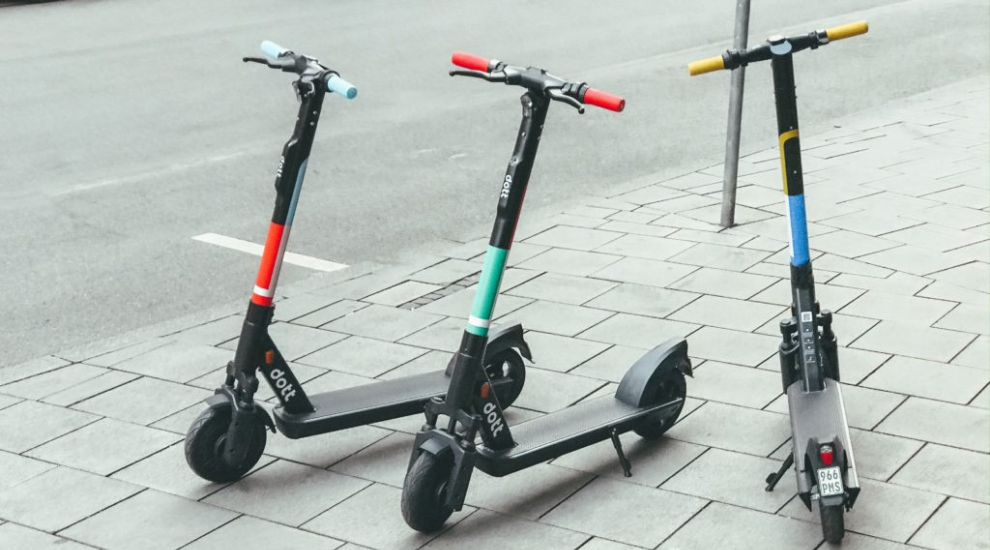The concept of micromobility has been gaining ground for quite some time. Getting urban commuters out of their motor vehicles and onto a fun, efficient, low carbon, low congestion alternative is clearly an attractive proposition. So why has it taken until now to get to the point that the UK has proposed legalising them? Well, there are several areas that have caused concern among stakeholders.
Firstly, will micromobility truly replace motor vehicle journeys or will it actually replace more active modes like walking and cycling, to the detriment of low carbon aims? In the short term at least, COVID 19 has side-lined that concern. If movement of people and goods is going to get to the levels needed to support economic recovery while social distancing and health concerns continue to decimate public transport use, then every alternative to the private car would be welcome.
Secondly, experience in other places has highlighted problems with dockless hire devices being parked carelessly, causing obstructions and hazards to pedestrians, particularly those with impaired vision. This can be managed by restricting hire schemes to those with formal docking stations, though perhaps in future more sophisticated schemes or enforcement could be developed to allow the freedom of dockless devices without the downsides from anti-social behaviours.
Finally, one of the biggest concerns around micromobility has always been their safety. Global fatalities relating to the use of micromobility devices remain rare in comparison to other road fatalities but have happened sufficiently to hit the headlines in many countries. Understandably, the focus of researchers and authorities alike has been on comparison with pedal cycles and electrically assisted pedal cycles. Indeed the ‘safety requirements’ proposed for UK trials are clearly modelled around bicycles (e.g. two in-line wheels of a minimum diameter, coupled with handlebars and controls and a maximum speed of 25 km/h, without the need for mandatory helmet use).
In February, the OECD published an excellent study on safe micromobility, which reached many sensible conclusions and recommendations. The one that seems most often quoted is that “a trip by shared or standing e-scooter is no more likely than a bicycle trip to result in a road traffic death”. This often seems to be interpreted as there being no real difference in risk between scooter travel and pedal cycle travel. This is not the case.
The OECD report itself notes that “the very limited available data reveals similarities and differences between e-scooters and bicycles in terms of risks” and “the risk of hospital admission may be higher for e-scooters”. The report focuses strongly on fatalities, while acknowledging that the analysis was based on 39 deaths reported by the global media with consequent limitations and risks (e.g. small sample issues, possible selection bias in terms of the types of collision considered ‘newsworthy’ etc).
Since this landmark report, there has been a sequence of new hospital studies published around the world. These contain larger samples of more homogenous data with better technical control than is available from media reporting. However, the casualties are very rarely, if ever, fatally injured so important differences in the characteristics of the most severe incidents may be missed. Collectively the studies highlight similarities and significant differences with the OECD findings, for example:
- The evidence suggesting the risk of hospital admission is higher for e-scooters than for bicycles is strengthened
- The injuries sustained by e-scooter riders are mostly to the head and face and many of these can involve traumatic brain injury.
- The evidence that helmet use among e-scooter riders is overall much lower than for pedal cyclists, is reinforced. Similarly, the conclusion that users of privately owned scooters are more likely to wear a helmet than users of hired devices
- When all injury severities are considered rather than just fatalities, the evidence strongly suggests that e-scooter riders are much less likely than pedal cyclists to be injured in collision with a motor vehicle. A large majority of casualties are recorded as single vehicle incidents or ‘self-inflicted’. This contrasts with the fatality data from the OECD suggesting that the proportion of e-scooter fatalities occurring in collision with a motor vehicle is both high (80%), and similar to, pedal cycles. The reasons for this have not been thoroughly explored. It could be a function of impact speed or configurations, where scooters are mainly used, reporting bias in the media, the characteristics of scooters themselves and/or the use of protective equipment.
- Inexperience is playing a significant role, with two studies suggesting that up to around one third of all emergency department trips involve riders who stated it was their first use of micromobility.
Understanding this data, its strength and limitations is vital to ensuring the right safety solutions are applied. The top two recommendations of the OECD report are to
- Allocate protected space for micromobility and keep pedestrians safe
- Make micro-mobility safe, focus on motor vehicles.
Based on fatality data, these are very sensible. However, the emerging evidence is beginning to suggest that e-scooters suffer a substantially higher rate of non-fatal casualties per journey than cyclists. These casualties are more likely than cyclists to come from single vehicle (self inflicted) collisions, inexperience could be a major factor, with low helmet use combined with scooter dynamics contributing to a high rate of head injury, including serious traumatic brain injuries.
Consideration of the potential for serious life changing injury, as well as fatalities, is important across all vehicle safety sectors but this emerging evidence suggests it may be even more important for micromobility than for cyclists. There is little doubt that separated cycle lanes will be a good thing, but the evidence suggests some risk that the benefit to scooter safety will be less than the benefit to cycle safety.
Similarly, while it is of course important to focus on motor vehicle safety, the head injury risk in single vehicle micromobility incidents should not be ignored. Vehicle Safety measures will take significant time to take effect as new vehicles penetrate the fleet. Measures to mitigate risks from single scooter collisions can be applied immediately in the coming trials.
Each and every trial run under the Government’s relaxation of the rules will have the opportunity to select the exact model of device they choose to use and they can offer or require rider training and helmet use. It can also help to carefully select the areas or even the routes that they can be used on, as well as offering at least short-term infrastructure improvements to support the trials. Careful and scientific design of these trials can help manage the risks in the short term and just as importantly, can help ensure we learn from the experience to help set the micromobility agenda for the long term.
Treating the trials as simply legalisation of devices by a different name will risk poorly informed choices, decreasing safety or stifling innovation from a fast paced, dynamic sector that many believe has great promise both for economic growth and for sustainability.
Read ITEN’s full response to the DfT Future of Transport Regulatory Review


Recent Comments